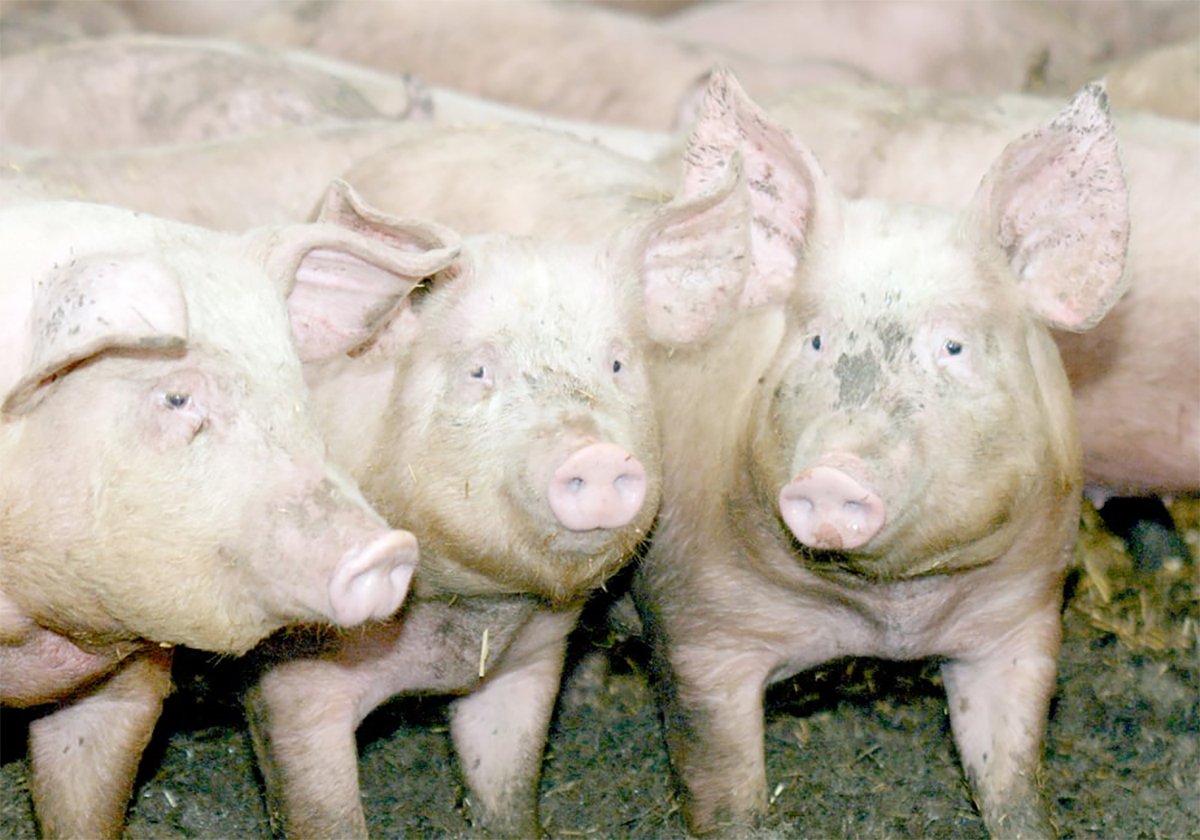Pam Heath laughed when asked how many Tamworth pigs she owns.
“It’s not going to impress your readers very much,” said Heath, who has one Tamworth, a rare breed also known as the Irish Grazer, on her farm near Nesbitt, Man.
What’s more impressive is Heath’s effort to rebuild the Tamworth population and her work as secretary of Rare Breeds Canada, which wants to preserve and expand the numbers of all endangered livestock and poultry breeds in Canada.
“The mandate would definitely be to preserve the genetics, so somewhere down the road we have the gene pool to come back to if we need it,” Heath said while standing in front of the Rare Breeds Canada exhibit at the Royal Manitoba Winter Fair in Brandon.
Read Also

The Western Producer Livestock Report – October 2, 2025
Western Producer Livestock Report for October 2, 2025. See U.S. & Canadian hog prices, Canadian bison & lamb market data and sale insight.
The exhibit was organized in conjunction with Rare Breeds’ annual general meeting held April 4 in Brandon.
On display at the fair were Berkshire pigs, Dexter cattle, a Friesian horse and a Mammoth Jack Stock donkey, which stands nearly two metres tall.
Not on display, however, was Heath’s Tamworth sow. It was back at the farm waiting for a mate to arrive.
“Right now, I’m looking at importing some fresh bloodlines from Northern Ireland,” said Heath, who is expecting a Tamworth boar at her farm soon, once the paperwork and other details are finalized.
When the two pigs successfully breed, it will be the second litter for the sow, which produced nine piglets in its first litter. Those piglets have all been placed on farms outside of Manitoba, said Heath, who also has a small herd of Shetland sheep on her farm.
Heath, who farms with her son Richard, obtained her sow two years ago from a breeder in eastern Ontario. Tamworths are known for their ginger colour and hardiness, thanks to a dense bristle that helps combat wind and cold. The breed, which is known for producing high quality bacon, used to be much more common in Manitoba, Heath said.
“At the moment, we have the only Tamworth in Manitoba. Back in the 1960s, they were on every other farm.”
She said numbers plummeted when large-scale production increased.
“The Tamworth and the Berkshire pigs, they’re more used to being outside. They don’t handle hog barn situations very well … so I guess that’s where their popularity declined.”
According to the Rare Breeds Canada website, Tamworth numbers in Canada are at critical levels.
“There are only a few hundred,” said Elwood Quinn, a director and farmer in eastern Ontario, who came to Brandon for the Rare Breeds annual meeting.
According to the Rare Breeds Canada website, there are Tamworth breeders in British Columbia, Ontario, Nova Scotia and Prince Edward Island.
One producer who is doing his part to bring Tamworths back is Harry Pietersma, who farms 80 kilometres south of Ottawa.
“They were at one point an important part of the farming scene in Canada,” said Pietersma, who has had Tamworths for 25 years. “I’ve found them a good breed to keep. They’re good mothers … and they raise a reasonable litter (eight to 12).”
Pietersma said he has recently seen a sharp increase in demand for his Tamworths.
“They are a very good pig for pasture based systems, and I sell a lot of stock to Ontario and Quebec,” he said.
He attributes increased demand for Tamworths to consumers who want lean and local meat.
While the association’s mandate is focused on maintaining genetics of rare breeds rather than on local food, Quinn said the synergy between the two movements is creating a large window of opportunity.
“The niche market is coming up without us even looking for it, through this buy local (trend),” said Quinn.

















